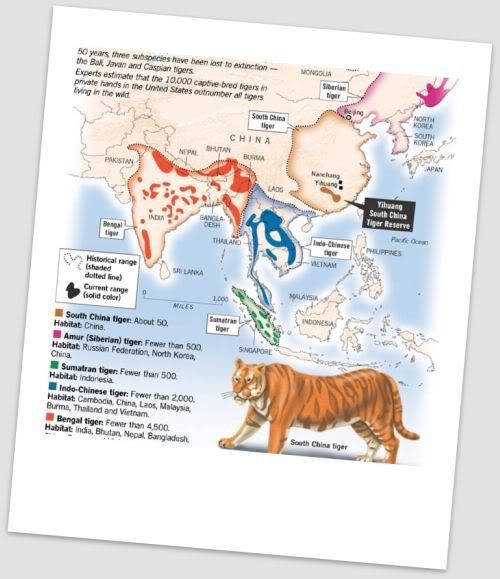Welcome to the Island of Sumatra, home to the Sumatran Tiger!

We are really happy to see that you are interested in the wildlife that lives here in beautiful Sumatra, part of Indonesia. The animal that we focus on here, on this site, is the Sumatran Tiger. This furry little, or rather big, critter is critically endangered. There are only approximatly 400 to 500 Sumatran Tigers left in the wild.
Sumatran Tigers are the smallest of all six remaining tiger breeds, ranging six to eight feet in height and two-hundred to three-hundred pounds in weight. Because of its small size, the Sumatran tiger can move fairly quickly through the jungle in which it lives, and surprisingly, unlike most jungle cats, it has webbing between its feet that makes it an incredibly fast swimmer.
This specific breed of tiger feasts on larger animals like wild boar, tapir and deer, and sometimes they chow down on smaller animals like fowl, fish, and the occasional - yet very rarely - orangutan. Sumatran tigers rarely catch these primates because orangutans spend very little time on the ground.
The Sumatran Tiger's scientific name is Panthera tigris sumatrae.

Above is a map showing Tiger Habitats. Can you find the Sumatran Tiger's habitat?
Sumatran tigers are darker than other tigers which makes blending in to their environment easier. These tigers have narrow strips and an orange to reddish coat. Most tigers wander on their own, and the only times you really see more than one Sumatran tiger in a certain area is when it is a mother and her cubs. On the rare occasion when do see more than one tiger, this group is called a streak. Most tigers have the ability to live ten years in the wild and up to twenty-five in closed inhabitats such as Zoos and National Parks.

The tigers gestation period is one hundered to one hundred and ten days, and they breed during the winter season. The normal litter is 2-4 blind cubs that weigh 2-3 pounds at birth. For 6-8 weeks the cubs live off of the mother's milk and then they are introduced to meat. These cubs are dependent on their mother for about a year and a half, and then they can go out on their own.

|
|